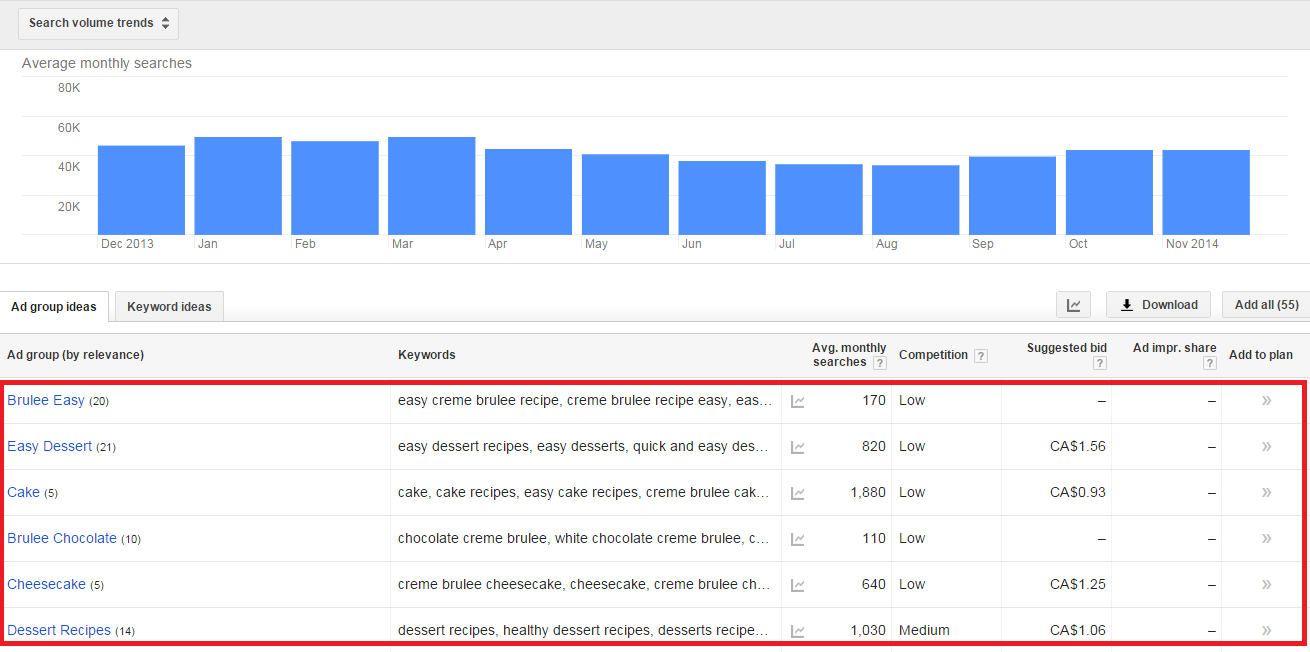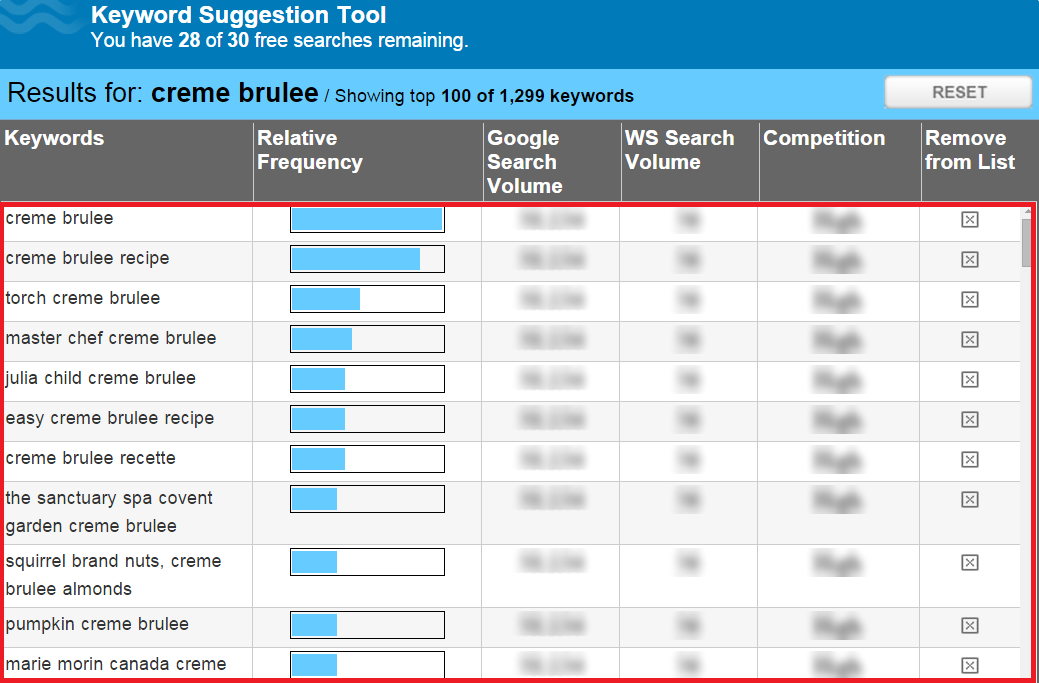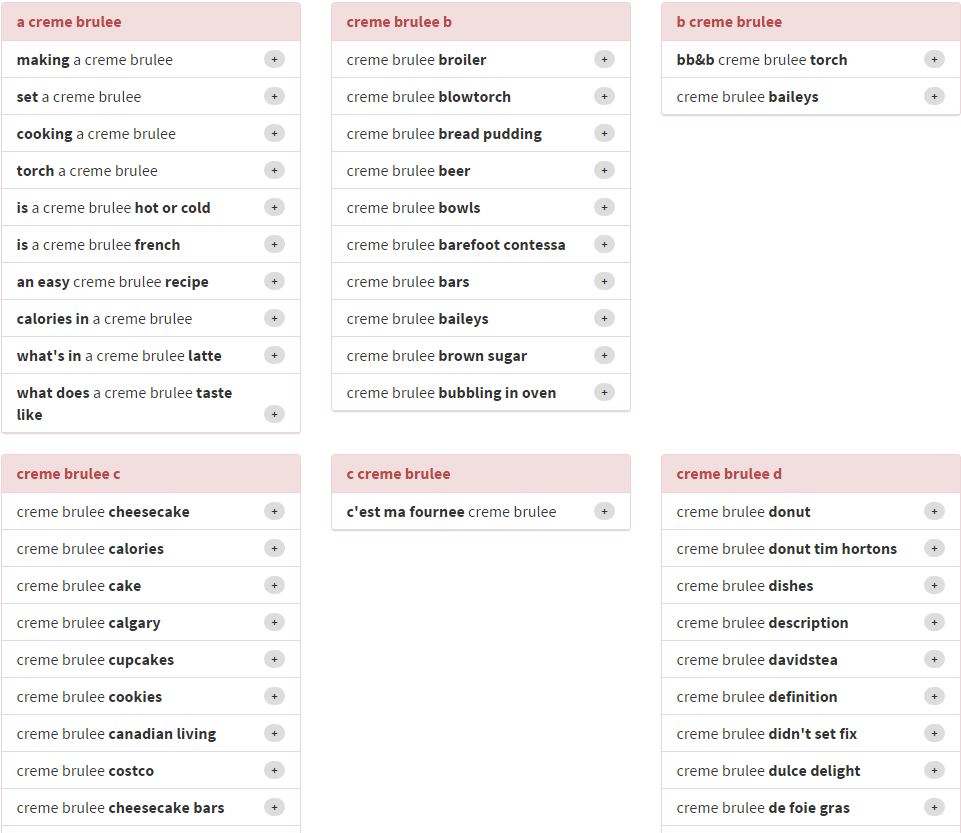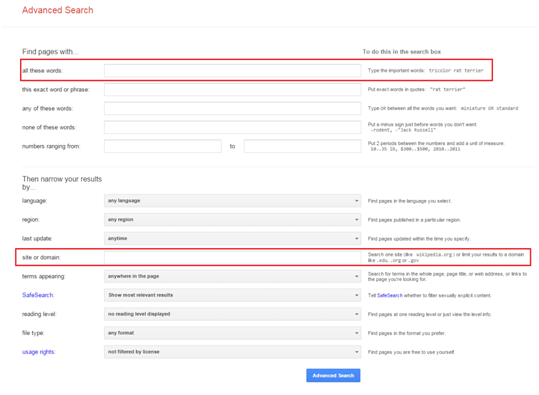4 Implementation Essentials in Content Marketing

SEO best practices have shifted to emphasize content. Google and other search engines have always tried to return relevant results and these days content marketing and SEO are interconnected. That’s why developing and executing an effective content marketing strategy is one of the most effective ways to generate organic traffic.
To help you implement a successful content marketing program, I’ve suggested four steps you should take:
-
Define the keywords you want to optimize
To attract qualified audiences using content, you need to consider how your audience searches for your products or service. These search terms are the targeted keywords you will use in the headline and body copy of the content you create.
For example, if you’re a Vancouver bakery and want to attract shoppers who want to buy pastries, include relevant keywords such as “Rich Chocolate Mousse Cake,” “Classic Vanilla Cupcakes,” or “Classic Vanilla Bean Creme Brulee” in the headline and body.
Including qualified keywords in title tags and contents helps Google understand what your webpages are about so it can rank you for relevant queries such as “Rich Chocolate Mousse Cake Vancouver.”
If you want to expand your keyword list, here are three tools you can use:
-
AdWords Keyword Planner
This is a keyword generation tool in your AdWords account. Use it generate relevant terms based on the keywords you enter.
For example, you can add the keyword “Creme Brulee” in AdWords Keyword Planner and the tool will suggest relevant terms such as “chocolate creme brulee,” “white chocolate creme brulee,” and “dark chocolate creme brulee.”


Once you’ve generated pertinent keywords, you can include them in blog titles and body copy.
-
WordStream Keyword Generator
This is a tool powered by WordStream, a PPC and SEO management software vendor, to help you find relevant keywords based on the terms you've provided (similar to AdWords Keyword Tool).
To generate relevant terms, enter a targeted term in the search box. For example, you can insert “crème brulee” to generate similar terms such as torch “creme brulee,” “julia child creme brulee,” and “pumpkin creme brulee.”

-
Keywordtool.io
Similar to the two tools above, Keywordtool.io suggests relevant keywords based on terms you insert. The only major difference between Keywordtool.io and other keyword tools is that this tool arranges the suggested terms in alphabetic order.
For example, if you enter the keyword “crème brulee” in Keywordtool.io, the tool keywords that start A first, followed by B and so on.


-
-
Determine which blog posts you want to link internally
After you’ve created content that contain targeted keywords or themes, you can link these articles to related blogs. Doing so will help you boost the search ranking of other articles because you’ll pass ‘SEO juice’ from new articles to others through internal linking.
If you have trouble identifying which articles you should link to, use Google Advanced Search.
Google Advanced Search lets you find articles on a website (yours, for example) that are related to certain keywords.
For example, you can search for articles on your website that are related to the keywords “responsive web design” or “social media marketing.”
To do so, plug in targeted keywords in the all these words section and your blog URL in the site or domain box.

-
Determine service pages you want to link to
The main objective of content marketing is directing web visitors to product or service pages and converting them into paying customers.
To do so, embed links to product or service pages in the articles so readers can click-through them.
If you are unsure which service pages you should include in the blogs, use Google Advanced Search as mentioned above.
-
Measure results
Assess the performance of your content marketing program weekly by using tools such as the Google Analytics or Rank Tracker to determine whether your website’s search ranking has increased, whether your website’s organic traffic has improved, or whether you’re directing more traffic from your blogs to service pages.
If you discover that your site’s overall performance hasn’t improved, you can make changes such as including different keywords in headlines to target a new group of prospects or trying new call-to-actions in the content to drive more traffic to service pages.
The importance of content marketing hasn’t changed at all in 2015. It remains one of the most effective and crucial tactics to generate organic, inbound traffic.
If you have any questions about developing a successful content marketing plan, please contact Ray at ray.wang@smartt.com. If you want to gain hands-on experience in content marketing and other areas in digital marketing, register for our monthly P.A.C.E. digital marketing training workshop.


